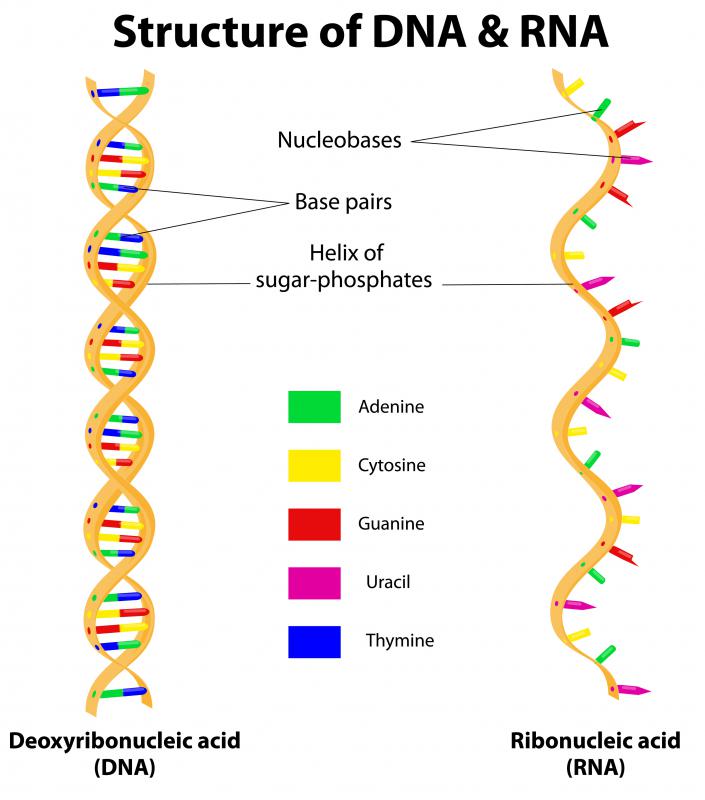At AllThingsNature, we're committed to delivering accurate, trustworthy information. Our expert-authored content is rigorously fact-checked and sourced from credible authorities. Discover how we uphold the highest standards in providing you with reliable knowledge.
What is a Mimivirus?
Mimivirus is the largest known virus. Specifically, Mimivirus refers to a viral genus, but it only contains one species - Acanthamoeba polyphaga mimivirus (APMV), so the terms are used interchangeably. The Mimivirus was discovered by accident in 1992 during research into Legionnaires’ disease being conducted by French scientists in Marseille. It was not until 2003 that a paper was published identifying the organism as a virus and explaining some of its workings. The reaction from the microbial research community since then has been substantial. Some even go so far as to call Mimivirus a "missing link" between viruses and bacteria.
Mimivirus is one of several known DNA viruses, relatively rare and large in comparison to their cousin the RNA viruses. Herpes simplex virus, the virus responsible for Type 1 herpes, is another example of a DNA virus. The Mimivirus is so large (400 nm) that scientists originally thought it was a gram-positive bacterium when they first discovered it. The virus is well-known because, being the largest virus yet observed, and due to other qualities, it blurs the line between viruses and bacteria. The Mimivirus genome consists of 1.2 million base pairs. Based on metagenomic data, it is suspected that other viruses in the same family - Mimiviridae - probably exist. Searches for them are currently underway, and new microbes are being discovered all the time.

The Mimivirus infects amoebas (where it was first discovered), and poses no threat to human beings. Its structure is that of a polygon covered with fibrils (hairs) that, when included in the measurement of the virus, can double its apparent size. Like other large viruses, it has an internal lipid layer that protects its DNA core. Its genome is roughly 1.2 million base pairs in length, and has not yet been sequenced. This genome is twice the size of the next largest known viral genome. Although, like all viruses, it does not have a cell wall, Mimivirus is larger than at least 30 of the smallest known cellular organisms. The Mimivirus genome has unique genes that code for metabolic functions not seen in any other viruses, and as such its study will teach us important new things about life in its most basic forms.

Mimivirus is so unusual that some scientists have suggested that it may be part of a new kingdom of life. But since the life classification system has only recently been remodeled, and most scientists would not consider creating a new kingdom of life with only one member, no matter how different it is, this is not likely to be accepted by the wider biological community.
Frequently Asked Questions
What exactly is a Mimivirus?

A Mimivirus, short for "mimicking virus," is a large and complex virus first discovered in 1992. It challenges traditional definitions of viruses and life due to its size and the complexity of its genome, which contains more genes than some bacteria. Mimiviruses are notable for their ability to infect amoebae and their resemblance to small bacteria under a microscope.
How was the Mimivirus initially discovered?
The Mimivirus was discovered accidentally in 1992 by researchers looking for Legionella bacteria in a cooling tower in Bradford, United Kingdom. It wasn't recognized as a virus until 2003 when it was isolated from an amoeba in a hospital's water tower in France. Its large size led to its initial misclassification as a bacterium.
Why is the Mimivirus considered unique among viruses?
Mimiviruses are unique because of their giant size, both in terms of physical dimensions and genome complexity. They are among the largest known viruses, with a diameter of about 0.7 micrometers, and their genome contains over 1,000 genes, which is unprecedented for a virus. This complexity allows them to perform functions that are typically associated with cellular life.
Can Mimiviruses infect humans or cause diseases?
Currently, there is no direct evidence that Mimiviruses infect humans or cause human diseases. They primarily infect amoebae. However, some studies suggest a possible indirect role in human health, as their presence may influence the virulence of other microorganisms or impact the immune system. Ongoing research aims to clarify their potential impact on human health.
How do Mimiviruses challenge our understanding of the tree of life?
Mimiviruses blur the lines between viruses and cellular life forms due to their large genomes and the presence of genes previously thought to be exclusive to cellular organisms. This has led to debates among scientists about virus classification and the very definition of life, prompting a reevaluation of the tree of life and where viruses fit within it.
What impact has the discovery of Mimiviruses had on virology and science in general?
The discovery of Mimiviruses has had a profound impact on virology by expanding the understanding of viral diversity and complexity. It has spurred the discovery of other giant viruses and prompted new questions about virus evolution, the origins of life, and the potential for viruses to carry out life-like processes. This has opened up new avenues of research in evolutionary biology and virology.
AS FEATURED ON:
AS FEATURED ON:













Discuss this Article
Post your comments